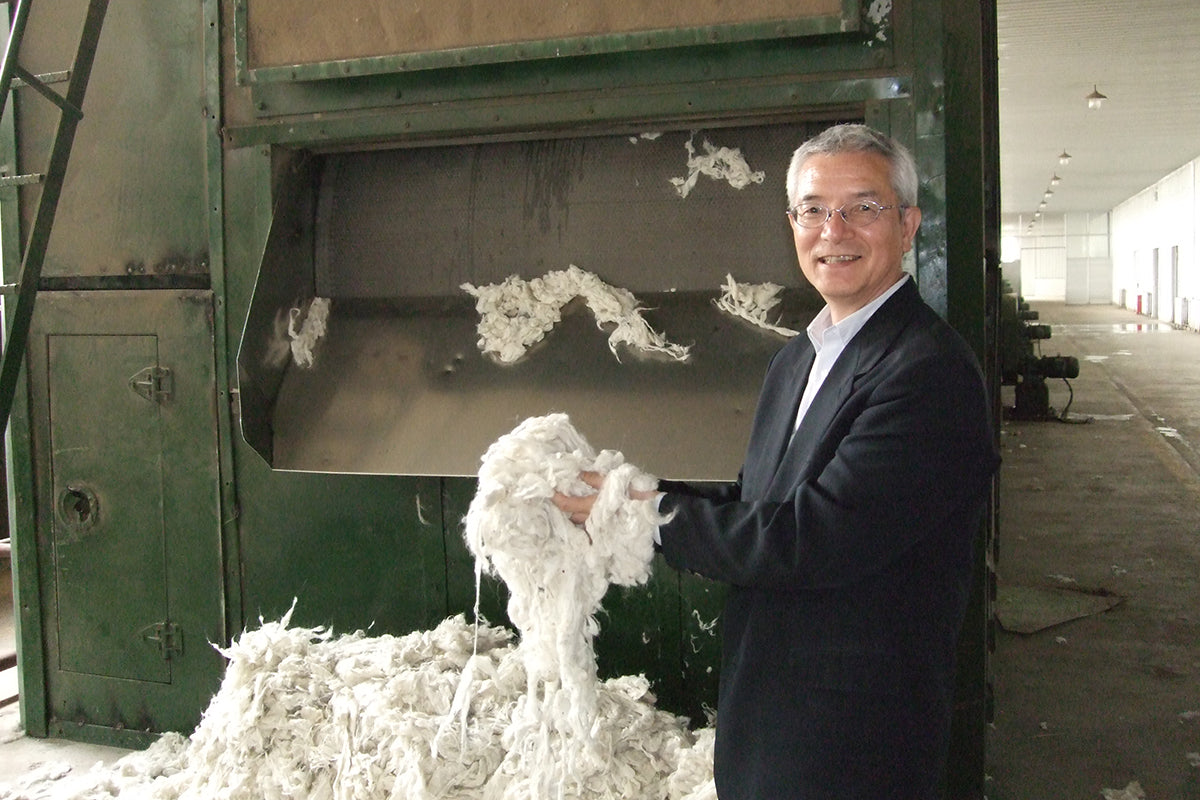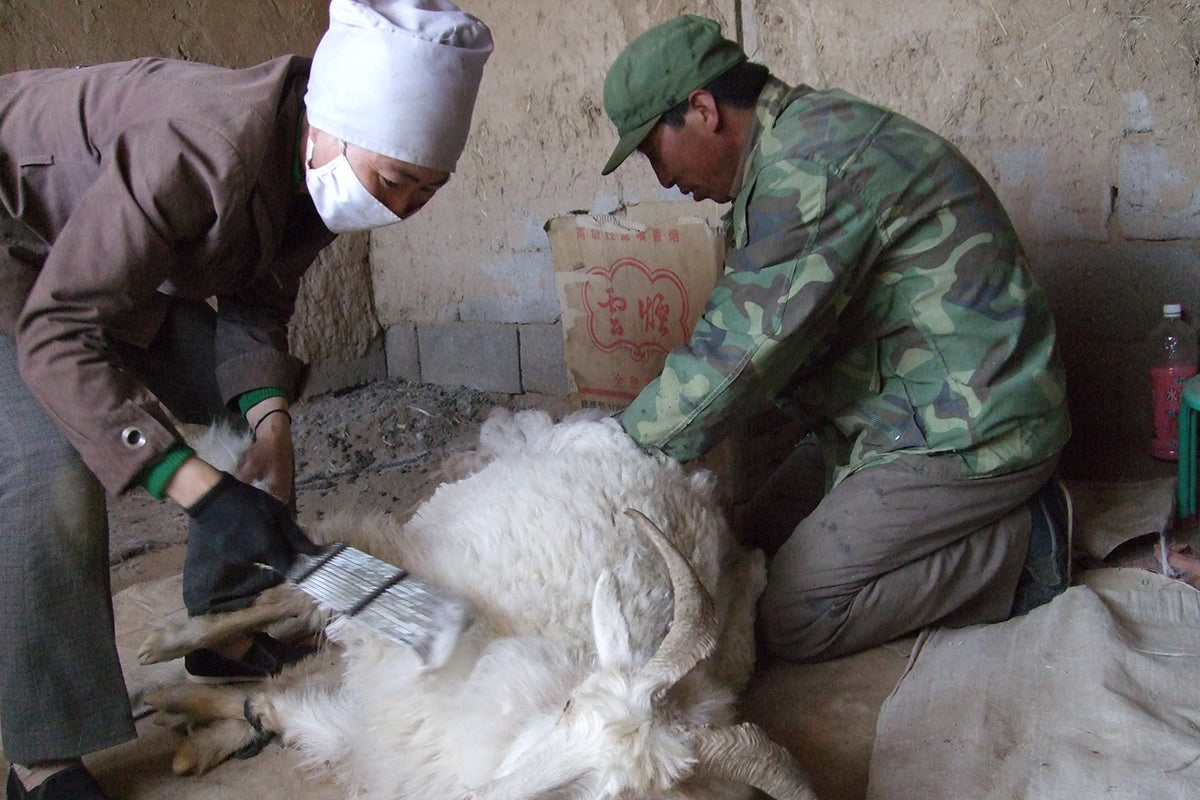Creating Cashmere Fluffy② Sorting of Soil Hair
A steady but important process that leads to the creation of local employment
Cashmere goats grazing in the wild accumulate a year's worth of dirt in their wool, including dead grass, twigs, and debris. This dirty wool is called "domou." The herders collect the "domou" and pack it into large 60-kilogram bags, which are then taken to the sorting area.

The sorting process involves removing impurities from the "domou". A large number of people, especially local women, carry out this task. This sorting process is the most labor-intensive part of the cashmere production process. Unlike knitting and sewing, which require skilled technicians, sorting is as simple as selecting and removing trash and twigs from the collected hair and using chemicals to wash away stubborn dirt. I heard that while the pay might not be high, it is greatly appreciated in areas where jobs are scarce, as it provides employment for many people.
The sight of numerous women, fully cloaked and wearing masks, working silently and diligently in a room as large as a gymnasium to sort the wool, is truly a sight to behold.






